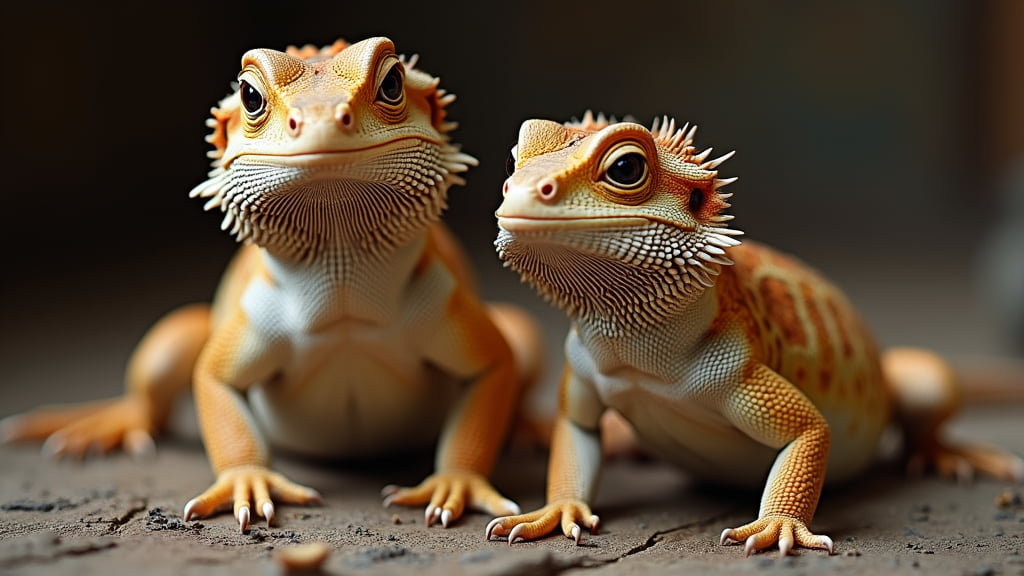If you’re a bearded dragon enthusiast, the thought of breeding these fascinating reptiles might have crossed your mind. Bearded dragons, known scientifically as Pogona vitticeps, make excellent pets due to their docile nature and unique personalities. Breeding season can be an exciting time, filled with anticipation and the promise of new life. However, it requires careful planning, preparation, and understanding of your bearded dragons’ needs. This comprehensive guide will take you through the essentials of bearded dragon breeding season, ensuring you and your dragons have a successful and healthy experience.
Preparing for Breeding Season
Understanding Natural Cycles
Bearded dragons typically breed in the spring, mimicking their natural Australian habitat where they come out of brumation and are ready to mate. Brumation is similar to hibernation and involves a period of reduced activity and metabolism.
- Temperature and Light Cycles: Gradually increase the temperature and adjust the light cycles to simulate the natural transition into spring. This helps signal to your bearded dragons that it’s time to mate.
- Nutritional Boost: Provide a high-calcium diet and vitamin supplements to both the male and female dragons. This ensures they are in peak condition for breeding.
Setting Up the Breeding Environment
A successful breeding environment replicates natural conditions as closely as possible.
- Separate Housing: Keep males and females separate until they are ready to mate. This prevents stress and promotes overall health.
- Nesting Box: Prepare a nesting box filled with a mix of sand and soil where the female can lay her eggs. The substrate should be moist but not wet, allowing the female to dig and deposit her eggs safely.
The Mating Process
Introducing the Dragons
When both dragons show signs of breeding readiness – such as head bobbing in males and waving in females – it’s time to introduce them.
- Supervised Introduction: Place the male and female together in a neutral environment. Supervise their interaction to prevent any aggressive behaviour.
- Observation: If the mating isn’t successful within a week, try again after giving the dragons some time apart.
Successful Copulation
Once mating has been successful, you’ll observe specific behaviours and physical changes.
- Physical Indicators: The male will display increased activity and the female might appear more sluggish.
- Egg Development: The female’s abdomen will gradually enlarge as the eggs develop. Ensure she has access to a high-calcium diet and plenty of water.
Caring for Eggs and Hatchlings
Egg Laying and Incubation
Once the female is ready to lay her eggs, she will dig in the nesting box.
- Egg Laying: Female bearded dragons typically lay between 20-30 eggs per clutch. Once laid, carefully remove the eggs and place them in an incubator.
- Incubation Conditions: Maintain the incubator at a steady temperature of around 29-30°C (84-86°F) with high humidity. This promotes healthy development of the embryos.
Hatching and Early Care
After approximately 60-70 days, the eggs will start to hatch.
- Hatchling Care: Provide a warm, secure environment for the hatchlings. A diet of small insects like pinhead crickets and finely chopped vegetables will ensure they get the nutrition they need.
- Separation: It’s vital to house hatchlings separately or in small groups to prevent bullying and ensure accurate monitoring of their health.
Conclusion: Breeding Success Achieved!
Breeding bearded dragons is a rewarding and fascinating experience. By understanding their natural cycles, providing the right environment, and caring diligently for both the parents and hatchlings, you can ensure a successful breeding season. Always remember to consult with a veterinarian if you encounter any issues or have health concerns about your dragons.
For more detailed information on bearded dragon care and breeding, feel free to explore our Comprehensive Care Guide or visit Reptile Health Organisation.
Meta Description
Discover everything you need to know for a successful bearded dragon breeding season! From preparation to hatching, our comprehensive guide provides expert advice and practical tips.
Internal and External Links
- Internal Link: Comprehensive Care Guide
- External Link: Reptile Health Organisation
This tailored approach should ensure a smooth, enjoyable, and successful breeding season for you and your bearded dragons. Happy breeding season!

